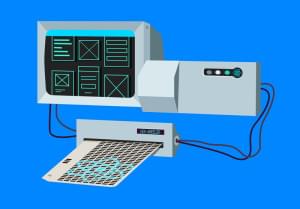Sometimes it’s easier to do everything yourself instead of collaborating, isn’t it? If you’re an information architect, there are some compelling reasons to call all the shots:
- The project starts with you, so you get to make all the initial decisions yourself. No one else on the project has that liberty.
- You have firm start and end dates, after which you can move on to other work. Think of all the projects you could get through!
- Everyone is looking to you as the specialist, which means you should be able to come up with the right answers and not involve others. Plus, you save your co-workers time by not involving them in all the initial project meetings.
But wait, isn’t this sounding a little too good to be true? Or maybe you’re thinking it seems pretty risky! You’d be right in either case.
The fallout from making IA decisions in a vacuum can be further reaching than you might suspect. The truth is that collaboration, solicited or not, is bound to happen once your work is sent to design. Quality designers won’t just regurgitate your wireframes, they’ll interpret them; furthermore, in the process of explaining your wireframes to the designer you’ll no doubt come up with new ideas or improvements.
Now you’re in a tricky situation, because changing an approved wireframe increases scope creep, and moving forward with the already approved wireframes would lead to what you now realize is a subpar solution. It will be a stressful moment for the whole team, but not as stressful as it happening during development.
That’s just one example of a whole host of issues that can crop up later in a project when there’s tunnel vision early on. Let’s look at some ways to prevent this and ensure you have great products.
Share Discovery Information
After the first few stakeholder and customer interviews, take the time to run some thoughts by your team. Their questions will help you identify holes in your own understanding, and shape your ongoing research. Different members can be involved at different levels, but everyone from the content strategist to the developer needs to understand the whys behind the project before they start their work.
Talk It Through
Contact a few colleagues who are either on your project or in your field, and meet with them as you work through interface and experience decisions. Remember: your job is not to have all the answers, but to ask the right questions. The answers to those questions lead you to the right solutions. As you explain a crippling problem to a colleague, you might just have an “Aha!” moment that gets you past your block.
Practice Makes Perfect
Consider making your big reveal before you actually make your big reveal. Practicing for your stuffed animals is handy, but presenting to your team is even better. Concepts or explanations that sound great in your head may be less eloquent coming out of your mouth. If you thought through the big picture and philosophy that has driven your decisions, your presentation will be compelling and make sense. If you are unprepared or your decisions are haphazard, you’ll end up dragging your client and team through a mire of tedious details until their eyes cross. You might even resort to convoluted industry lingo! If you’ve collaborated all along, by the time your actual presentation comes around any member of your team should be able to give it (but you still need to!).
All these generous people lend you their time and brain power, so make sure you return the favor. The client will sense the consistency and unity of your team, and their testimonial will show it.
If you want to read more from Emily, subscribe to our web design newsletter, the SitePoint Design View.
Emily Smith is an information architect and usability consultant for the web and Apple devices. She co-works with other web professionals in Greenville, SC and can be found online at emilysmith.cc.

